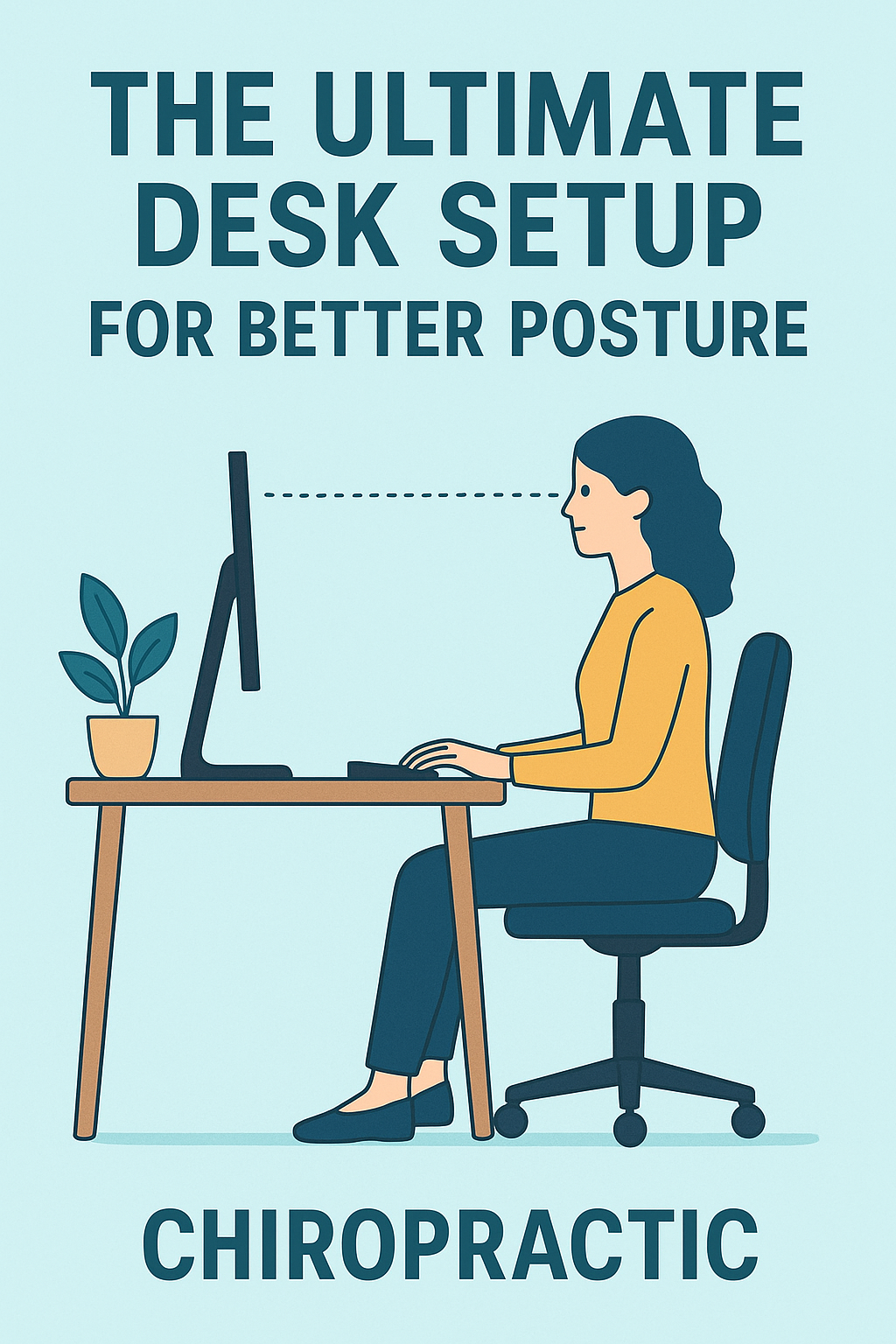The Ultimate Desk Setup for Better Posture 🪑

Simple Adjustments That Protect Your Spine and Boost Productivity
If you spend hours a day working at a desk, you’ve probably felt it — the stiff neck, sore shoulders, and nagging lower back pain that creep in by the afternoon. The truth is, your workspace setup can make or break your posture. The good news? With a few simple tweaks, you can create an ergonomic desk setup that supports your spine, reduces discomfort, and keeps you feeling energized throughout the day.
As chiropractors, we see the effects of poor posture every day — and we know most of them are preventable. Here’s how to build a desk setup that’s kind to your back and body.
🖥️ 1. Start With Screen Height
Your computer monitor should be at eye level, about an arm’s length away. If you’re constantly looking down at your screen, you’re putting unnecessary strain on your neck and upper back.
Quick fix:
Use a monitor stand (or even a few stacked books) to raise your screen until your eyes are level with the top third of the monitor.
💺 2. Adjust Your Chair for Spine Support
A good office chair should support the natural curve of your spine, especially your lower back (the lumbar region).
Ideal setup:
- Feet flat on the floor (or on a small footrest)
- Knees bent at roughly 90 degrees
- Hips slightly higher than knees
- Backrest supporting your lower back
If your chair doesn’t offer enough lumbar support, try adding a small pillow or a rolled-up towel behind your lower back.
⌨️ 3. Keep Your Keyboard and Mouse Close
Your keyboard and mouse should sit close enough that your elbows stay near your sides and your wrists stay straight — not bent upward or downward.
Pro tip:
Position your keyboard so your forearms are parallel to the floor, and use a wrist rest if needed to avoid strain.
📱 4. Don’t Forget About Your Phone
If you spend a lot of time on calls, avoid cradling the phone between your shoulder and ear. This position is a common cause of neck and shoulder tension.
Better option:
Use a headset, speakerphone, or Bluetooth device so your hands — and posture — stay relaxed.
🧍 5. Move Often
Even the most ergonomic setup can’t replace movement. Our bodies are built to move, not sit still all day.
Set reminders to:
- Stand up and stretch every 30–60 minutes
- Walk around while on phone calls
- Do gentle shoulder rolls or neck stretches at your desk
A few minutes of movement every hour can do wonders for circulation, flexibility, and focus.
🌿 6. Bonus: Create a Healthy Work Environment
Your workspace should also feel good. Proper lighting, plants, and a clutter-free desk reduce eye strain and stress — both of which can affect posture over time.
💡 Final Thoughts
Small changes add up. By taking the time to optimise your desk setup, you’re not just improving posture — you’re investing in your long-term health and productivity.
If you’re struggling with neck, shoulder, or back pain from working at a desk, our chiropractic team can help. We’ll assess your posture, identify problem areas, and create a personalised plan to get you back in alignment and feeling your best.
Ready to sit smarter and feel better?
👉 Book an appointment with our chiropractors today and get a personalised posture assessment.